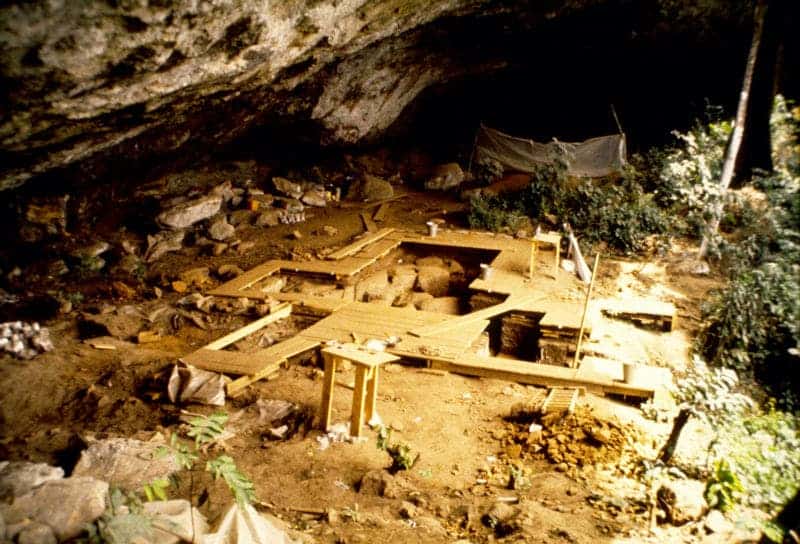Over 1,000 ceramic sherds, nearly 500,000 pieces of lithic (stone) materials, and 18 skeletons have been uncovered by archaeologists at a shelter called Shum Laka, northwest Cameroon.
The rock shelter itself is approximately 50 meters wide at its greatest point and up to 20 meters deep. New skeletons uncovered at the site could force us to reconsider our early lineage and include some “ghost” ancestors.

Understanding early human evolution means going back to Africa and studying ancient populations. However, that’s not an easy thing to do. We don’t know exactly where these populations lived, and finding fossils has proven to be a daunting task.
There’s another problem: even when fossils do survive, central Africa, where many of the ancient lineages lived, is too hot and humid for DNA to survive. This means that any fossils containing viable DNA are an extremely rare find — and this is exactly why this study is so important.
A rock shelter uncovered in the grasslands of Cameroon was found to contain the bones of four children buried thousands of years ago, and these bones contain enough DNA for analysis. It’s the first time DNA this old has ever been found in the area, and it holds a lot of surprises.
For starters, the area in which it was found is intriguing. The shelter, called Shum Laka, lies where West Africa meets Southern Africa. This area was inhabited by a population called the Bantu people. The Bantu made several agricultural and metallurgical developments that allowed them to spread across the continent, leaving their genetic, linguistic, and technological mark on several other populations.

However, the children did not belong to the Bantu group, DNA analysis revealed. Instead, the children belonged to other hunter-gatherer groups called the Baka and the Aka — groups historically known as “pygmies” (though that term is considered derogatory today).
The Baka and the Aka live hundreds of kilometers away, in the rainforests of central Africa. It was surprising to see them there, inside Bantu territory, especially as these two groups are not even closely related.
But things got even more surprising.
The DNA analysis showed that all the children were related to each other, with the degree ranging from distant cousin to something similar to a half-brother. All of them, additionally, had some DNA coming from an ancient source in West Africa — including a “long lost ghost population of modern humans that we didn’t know about before,” says population geneticist David Reich of Harvard University, leader of the study.
The finding is important in multiple ways. For starters, it suggests that the theory that Bantu people originated in this area of Central Africa and radiated across the continent is not true. It might also be possible that the Bantu also shared the shelter with these groups and they are simply not represented in the burials — but if this were the case, there would probably be some interbreeding between the groups, and this was not observed.
Secondly, the analysis suggests that there are at least four major human lineages, which date to between 200,000 and 300,000 years ago. This was never shown before, and indicates a “ghost lineage” — an ancient group for which we have no physical evidence.
The data from these genomes, combined with some additional modern samples from West Africa, suggest that an unknown group contributed to hunter-gatherers from both East and West Africa. But it doesn’t appear to have persisted to the present as a distinct population.
All of this goes to show just how crazily complex mankind’s early evolution was. There were multiple groups isolated from each other for long periods of time which then started spreading and intermingling, but we don’t know who came from where. We also have “ghost lineages” in our past, and we need to find physical evidence to better understand who these people were.
It’s all a massively intricate story, and for all the missing puzzle pieces, it’s remarkable that researchers have cobbled together so much with so little information. It will take a long time to uncover all the puzzle pieces, but it’s well worth it. After all, it’s our story.
The study has been published in Nature.









